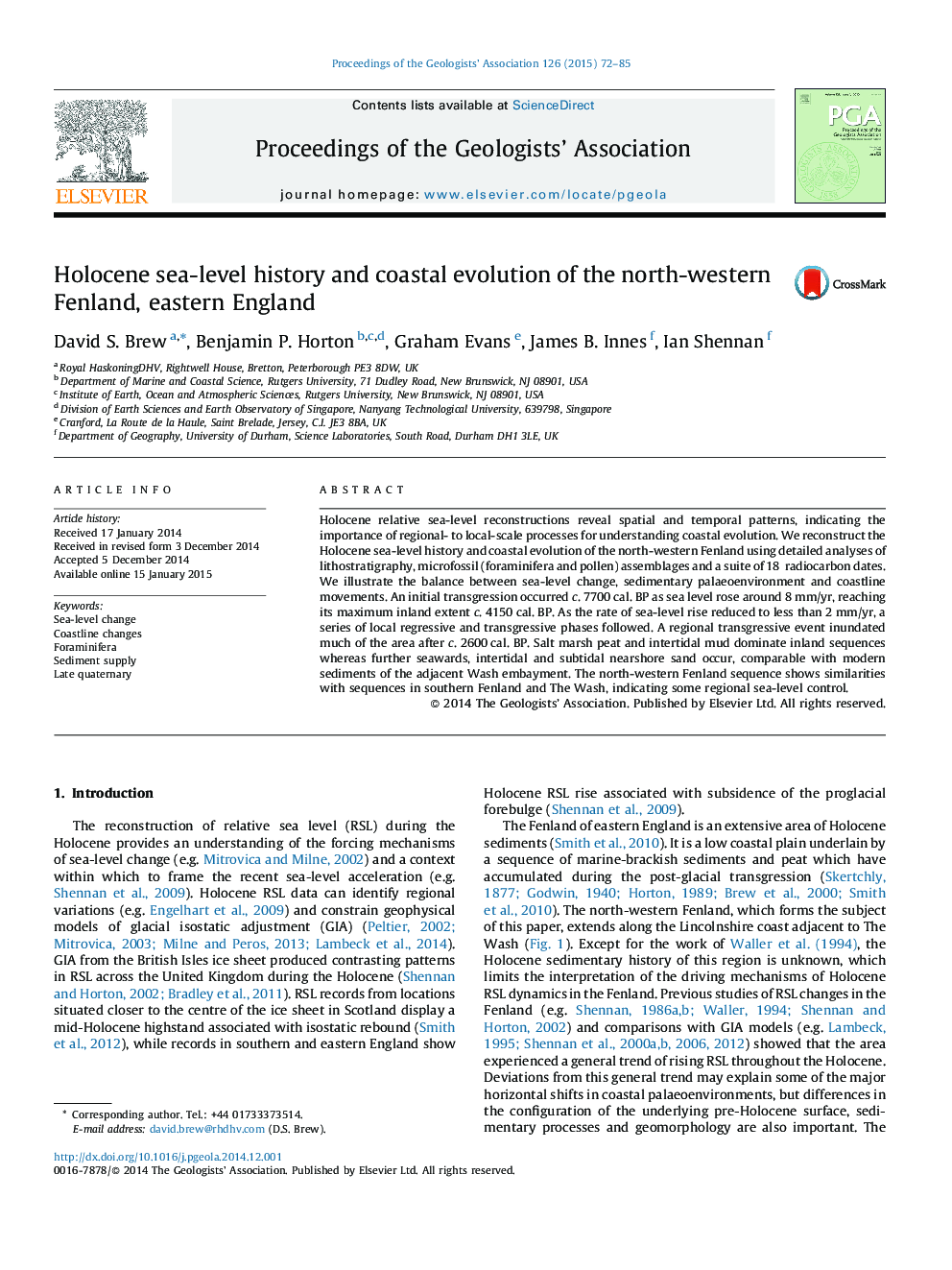| Article ID | Journal | Published Year | Pages | File Type |
|---|---|---|---|---|
| 4734715 | Proceedings of the Geologists' Association | 2015 | 14 Pages |
Holocene relative sea-level reconstructions reveal spatial and temporal patterns, indicating the importance of regional- to local-scale processes for understanding coastal evolution. We reconstruct the Holocene sea-level history and coastal evolution of the north-western Fenland using detailed analyses of lithostratigraphy, microfossil (foraminifera and pollen) assemblages and a suite of 18 radiocarbon dates. We illustrate the balance between sea-level change, sedimentary palaeoenvironment and coastline movements. An initial transgression occurred c. 7700 cal. BP as sea level rose around 8 mm/yr, reaching its maximum inland extent c. 4150 cal. BP. As the rate of sea-level rise reduced to less than 2 mm/yr, a series of local regressive and transgressive phases followed. A regional transgressive event inundated much of the area after c. 2600 cal. BP. Salt marsh peat and intertidal mud dominate inland sequences whereas further seawards, intertidal and subtidal nearshore sand occur, comparable with modern sediments of the adjacent Wash embayment. The north-western Fenland sequence shows similarities with sequences in southern Fenland and The Wash, indicating some regional sea-level control.
